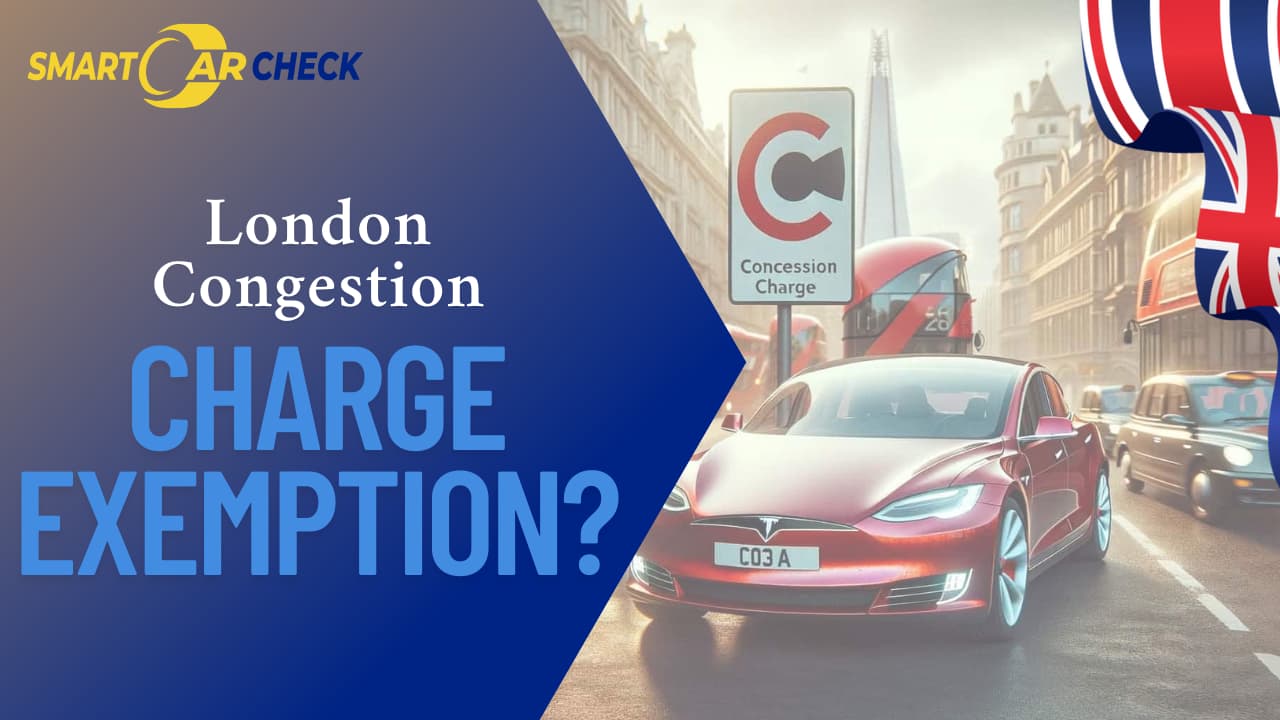Driving an electric car in London feels amazing. There is no petrol, zero emissions, and the car is smooth and silent. But what if the congestion change continues? Things can be confusing.
Many drivers assume electric cars are an exception to the London Congestion Charge; they are not. Without proper registration, you’ll still get charged £15 a day.
This is why it’s important to correctly register your car or electric car. The process is not hard at all; it is easy to do. This article will explain every step to register your EV, including the shortcut, so you can save more time.
How Do You Register Your Car for the Congestion Charge Exemption?
Electric vehicles are eligible for the Cleaner Vehicle Discount, which provides a complete exemption from the Congestion Charge. However, you must register your vehicle first to receive the discount.
You can start by visiting the official website of Transport for London. Then, you’ll need to create a London Road User Charging account. Once signed in, follow the link to apply for the
Once signed in, follow the link to apply for the Cleaner Vehicle Discount. Here’s what you’ll need:
- A copy of your V5C logbook or lease agreement
- Proof that the vehicle is zero-emission
- A one-time £10 fee
Then, submit your document online and pay the required fee. The TfL usually comes within ten days, and once it’s approved, your electric car won’t be charged in the zone.
If unsure whether your car qualifies, do a quick ULEZ compliance check. It’s handy for confirming emissions data too.
Is There a Loophole to Save Time or Effort?
That’s an honest answer; there’s no way to bypass the registration process. However, the good news is that there are ways to avoid unnecessary details. Here are the tips you can follow:
First tip: Double-check the documents before you apply. A missing V5C page or the wrong address will result in your application being rejected, and it will take more time to redo the whole application process.
Second tip: If your vehicle is brand new and you do not have the V5C yet, you will need a confirmation letter from the dealership. TfL accepts this as temporary proof.
Also, if your car already meets the exemption criteria, you can start the application before you physically own the car. As long as you have the vehicle details and proof of intent to purchase or lease, TfL will consider the request.
Last but not least, use digital copies. TfL’s online system accepts scanned documents or PDF uploads; there is no need to post anything. Want to avoid paperwork confusion? Run a quick electric car tax check to confirm what’s due and which discounts apply.
What if the Car Is Not Registered Under My Name?
You can still apply even if the car is registered in someone else’s name, but not yours.
If it’s a company car, you must request a letter from your employer stating you are the primary driver. Attach the letter along with a copy of the lease of the company’s logbook. For a leased or rental vehicle, get a copy of the agreement with your name listed, and make sure that the document also shows the registered license plate number. TfL doesn’t require personal ownership—just evidence that you’re the responsible driver. If you’re unsure who technically owns the car, a tax band check by registration can help clarify the details.
Can I Complete the Process Online?
You can register online because the process is now digital. You can register and upload the documents through TfL’s official website. Once you’ve created the account and have uploaded all the documents, you will receive a confirmation email. Thus, you can track your application online.
All the processes are simplified through the online application, and there’s no need to visit the nearest post office. Just be sure your scans are clear and in the right format (PDF or JPEG).
Why do I Feel Like the Process is Complicated?
Honestly, the process is way more complicated than simplified here. Most confusion came from assuming that EVs are automatically exempt from the Congestion Charge. London’s clear air policies are moving faster than you think. The rules often change, which makes the driver unsure about what’s required. TfL also applied the same process to hybrids, plug-in hybrids, and battery EVs, which creates an extra layer to check.
There is this one thing you should know for sure: Once you are registered, the exemption lasts until the vehicle changes hands or the policy changes. No daily toggling or renewals.
The system exists to prevent abuse. It keeps the roads clearer and rewards genuinely low-emission vehicles.
If all this still feels overwhelming, check the ULEZ charge guide. It breaks down charges and zones based on your reg.
How does the congestion charge differ from the ULEZ charge?
Great question—and one that catches out many EV drivers.
The Congestion Charge applies to central London from 7 am to 6 pm on weekdays and 12 pm to 6 pm on weekends. It’s a traffic-reduction measure, not just about emissions. The ULEZ (Ultra Low Emission Zone) is different. It’s all about pollution, and it runs 24/7. ULEZ covers a much larger area than the Congestion Charge zone. Electric vehicles qualify for full exemption from both, but only if registered.
Learn more about how ULEZ compliance works and why it’s separate from the Congestion Charge.
Conclusion
If you drive in London, you must register your electric car for the Congestion Charge exemption. Buying an EV doesn’t save you from charges—you must take that one extra step.
Don’t let a small admin delay cost you £15 a day. Set aside 10–15 minutes, gather your documents, and complete it online. Once registered, you can cruise through central London without worrying about daily fees.
Need help understanding your car’s eligibility or tax setup? Run a check on Smart Car Check to stay on the right side of the rules.
Electric driving is the future, but staying compliant makes it even better.
Frequently Asked Questions
How do I know if my vehicle is due for an emission test?
Typically, the need for a car emissions test is linked to your vehicle’s registration. When it’s time for renewal, the notification you receive will often indicate if an emissions test is required as part of the process.
How do I pay for the London Congestion Charge?
The official and free TfL Pay to drive in London app allows you to pay fees for the Congestion Charge, the Blackwall and Silvertown tunnels, the ULEZ, and the Low Emission Zone. Additionally, the app enables you to set up automatic payments and pay any penalties you might incur.
Is Paddington in the congestion zone?
No, Paddington is not located within London’s Congestion Charge zone; it lies just outside its boundaries.
Are EVs exempt from the London Congestion Charge?
Switching to an electric vehicle can lead to savings on fuel, lower pollution, and contribute to cleaner air in London. Furthermore, qualifying zero-emission vehicles benefit from a complete exemption from the Congestion Charge until December 24, 2025.


